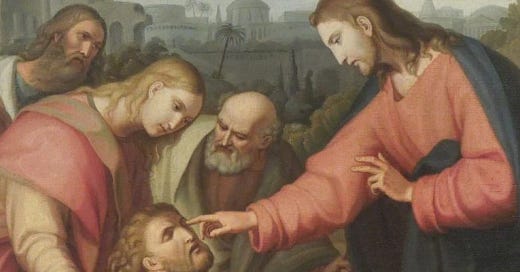The Gospel of Matthew ‘is based upon Mark but drawing on traditions about Jesus from an independent source, composed probably in the years 80-85.’
It was most likely composed in the ‘Syrian city of Antioch on the Orontes,’ where a sizeable community of Jewish believers in Jesus lived.
Scholars note five great discourses in Matthew, adding weight to the belief that Matthew is the great teaching Gospel:
The Sermon on the Mount Discourse (5-7)
The Missionary Discourse (10)
The Parabolic Discourse (13)
Community Discourse (18)
Eschatological Discourse (24-25).
Matthew begins with the infancy of Jesus. Luke also has infancy narratives, unlike Mark and John. Luke and Matthew present us with different material, from different perspectives. Read together, they provide a fascinating account of the joys and sorrows surrounding the birth of Jesus – ‘the One who saves.’
Matthew presents a genealogy of Jesus that is symbolic and realistic. He focuses on King David. His name is mentioned four times. The narrative is divided into three: Abraham to David, David to the Exile, Exile to Jesus – each consisting of 14 generations, the numerical equivalent of David’s name in Hebrew.
Great promises were given to David (2 Samuel 7), but of course, he was not perfect. He committed murder and adultery (2 Samuel 11), and ‘spilt much blood.’ Matthew is refusing to censure Jesus’ ancestry.
There is no shame in an ambiguous background. Jesus comes from a sinful background, enters a sinful world and is condemned to a shameful death as a sinner.
This knowledge helps us to enter into the mystery of Jesus as Matthew desires. God is more than happy to enter into the world’s mess, my mess, our mess. Jesus has come ‘not to call the righteous, but sinners’ (Matthew 9:13).
The Father sees us as we are. The Father encounters us as we are. But the Father never leaves us as we are. He wants to teach, save and heal us, giving new purpose, moving us from one interior state to another.
Matthew 13 is highlighted:
Well then, every scribe discipled for the kingdom of heaven is like a householder who brings out from his storeroom things both new and old.
Alfred Hitchcock always had a cameo appearance in his movies:
‘Is this passage Mathew’s cameo appearance?’
We might have expected Matthew to say from his storeroom things both old and new, but no, the text says from things both new and old. Matthew desires that we ‘see’ the utter newness and uniqueness of Jesus of Nazareth, emerging as he does out of the shadows of the Old Testament.
We are alerted to an interpretative tool in reading the Gospel of Matthew.
Certainly, Matthew is the great teaching gospel. The five discourses leave us in no doubt. But Matthew also places particular emphasis on Jesus’ healing.
The preamble to the Sermon on the Mount (Matthew 5-7) is found in Matthew 4:23-25. It provides a helpful context:
Jesus goes through Galilee and Syria teaching, proclaiming the good news, and healing every kind of disease.
Then Matthew 8-9 follows on with no less than nine miracles. It provides a helpful context.
Immediately, we sense the deep connection between teaching and healing, so much so, that we can state quite unambiguously:
Jesus’ teaching is healing, and Jesus’ healing is teaching.
Matthew can be proclaimed in a new and powerful way.
We let Jesus teach us. We let Jesus heal us.
Amen.
Q. When and why have we experienced a teaching of Jesus that has left us with an experience of personal and/or communal healing?



I love this reflection Father. A wonderful fusion of informing and an invitation to love.